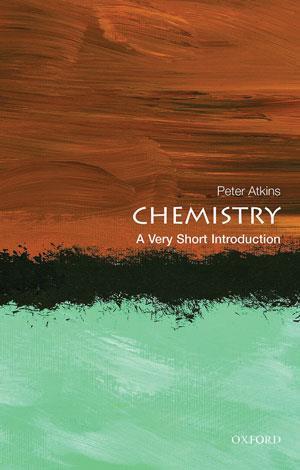Peter Atkins
Oxford University Press
ISBN 9780199683970
2015 | 107pp | £7.99

’When we gaze into the metal coating of a mirror, we are watching the waves in the metal’s electron sea,’ writes Peter Atkins in Chemistry: a very short introduction, a book that certainly made me realise that science and poetic language can make for a perfect blend.
Atkins is a prolific writer of popular science books such as Galileo’s finger and many textbooks – his book Physical chemistry singlehandedly got me through my first undergraduate courses on the topic.
Atkin’s new slim volume – barely 100 pages – is unusual in other ways than just its witty writing. What immediately caught my eye – or didn’t as the case may be – is that it is free from any images, diagrams, chemical structures or even bullet points. Not even the cover features a flashy structure or an image of some shiny lab equipment. Only a few chemical formulas and reactions are well hidden inside the bulk text. Most popular science books try to astound the reader with images of colourful reactions – Chemistry has nothing in that vein but instead surprises with vivid descriptions and creative analogies.
Starting with an introduction on the origin and division of the chemical sciences, as well as their overlap with other scientific disciplines, Atkins ventures into the very basics of chemistry: atomic structure, bonding and entropy. He succeeds in conveying these, which are fairly esoteric concepts for a non-specialist, within only a few pages, without his writing ever becoming dry or boring.
The next two chapters detail the basic reaction types and common laboratory and spectroscopic techniques. Subsequent chapters are filled with chemistry in everyday life and its achievements in conquering the four ‘elements’ of antiquity – earth, air, fire and water – but also the unnecessary evils it has produced such as chemical warfare and pollution. The last chapter adds an update on recent developments such as graphene and nanostructures that are likely to transform the chemical sciences in the coming decades.
Apart from being an earnest discussion of key chemical principles, Chemistry is also a very personal account. Atkins’ writing style is clearly recognisable – his enthusiasm for the topic is weaved into the narrative. Painting organic chemists to be magicians without sounding condescending is no simple task – yet Atkins does so perfectly. His apparent enjoyment of linguistics surfaces in many places: word origins detail concepts such as covalent bonding (‘valent’ being derived from the Latin word for strength and the Roman farewell, Valete meaning ‘Goodbye! Be strong!’) and he likens catalysts to marriage brokers – the Chinese characters’ literal meaning for the word catalyst.
I heartily recommend this book – it is an enjoyable read both for chemists and non-chemists alike. Part of the Very short introduction series, it fits perfectly into every suit or lab coat pocket. Of course, most books in the series are written by different authors but if Atkins’ volume is any indication of their quality, it shouldn’t take long to convert me into an economics enthusiast (book number 156 of the 417 titles in the series).
PurchaseChemistry: a very short introduction from Amazon.co.uk












No comments yet